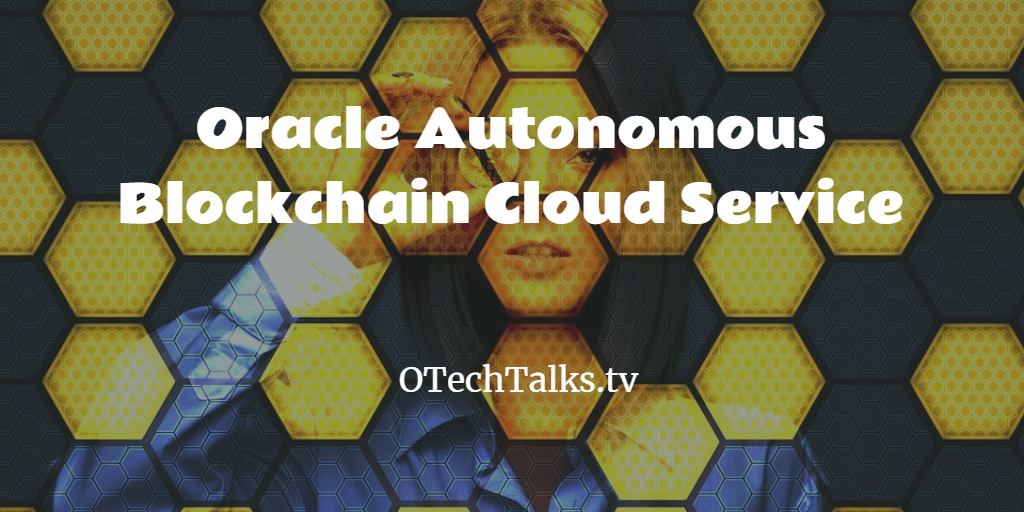
Oracle Autonomous Blockchain Cloud Service p-assembled and Managed PaaS are generally available from July 16th, 2018. In this session let’s review today the common features available and metric of Oracle Autonomous Blockchain Cloud Service, please note all the info which we are going to discuss and share from the public documents of Oracle Blockchain Cloud Service.
Oracle Autonomous Blockchain Cloud Service metric is 500 Transactions Per Hour,
- 500 Transactions Per Hour means 500 Blockchain Transactions attempted in an Oracle Autonomous Blockchain Cloud Service instance in one hour.
- Blockchain Transactionmeans a ledger query, an attempted endorsement transaction (irrespective of the outcome of transaction – success or failure), or an attempted commit transaction (irrespective of the outcome of transaction – success or failure) for each peer in the blockchain cloud service instance. A peer represents an entity (organization registered on the blockchain) executing Blockchain Transactions. One entity can have multiple peers. Customers specify the number of peers at provisioning time and can dynamically start additional peers.
A founder’s role is to creates and maintains the network in Blockchain network and participants that join the network. All organizations included in the network are called “Members”
Oracle Autonomous Blockchain Cloud Service is a “permissioned Blockchain”, which provides a closed ecosystem where only invited organizations (or participants) can join the network and keep a copy of the ledger. Permissioned blockchains use an access control layer to enforce which organizations have access to the network. The founding organization, or blockchain network owner, determines the participants that can join the network. All nodes in the network are known and use a consensus protocol to ensures that the next block is the only version of the truth.
There are three steps to consensus protocol:
- Endorsement — This step determines whether to accept or reject a transaction.
- Ordering — This step sorts all transactions within a time period into a sequence or block.
- Validation — This step verifies that the required endorsement are gotten in compliance with the endorsement policy and organization permissions.
Key features in the following 5 sections:
1-Build Trusted Business Networks
2-Automate with Smart Contracts
3-Conduct Private Transactions
4-Integrate Blockchain Transactions with core business Applications
5- Administration and Monitoring
You’ll Learn:
- Features of Oracle Autonomous Blockchain Cloud Service
- Oracle blockchain cloud metric
- Basics roles definition (endorser, order-er, validator)
Blockchain Resources:
Previous Session on Blockchain:
- When Not to Use Blockchain
- Recap of Future Blockchain Summit 2018 Dubai
- Introduction to Blockchain Technology
To share your thoughts:
- Leave a comment on the section below on this post
- You want to suggest any new topic we should cover in future Podcast
- Join us in Mastermind tribe
- Share this on Twitter, Facebook, If you enjoyed this episode and we together are learning new technologies.
To help out this initiative:
- Leave a candid review for the OTechTalks Podcast on iTunes! Your ratings and reviews will help the session on iTunes.
- Subscribe to the Podcast on iTunes to get the next sessions